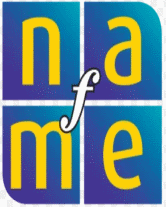Often students have difficulty learning to sing because they lackconfidence. The following are suggestions for helping students feelmore confident about their singing.
- You should not sing with the students. If you sing with the class,the students will become dependent upon you and will not developconfidence with individual singing.
- Repeat songs many times. Repetition is what makes young studentscomfortable with the song material. Also, do not add activities tosongs until the songs are very familiar to the students. It usuallytakes several lessons before students really know a song. Think toyourself could they sing this song while walking to school? If so, itis probably familiar enough to add activities.
- Develop a procedure for teaching new songs and use it consistently.The students will become familiar with the procedure and as a resultwill learn songs more quickly. The procedure should include opportunities for the students to do the following.
- Hear the new song performed several times.
- Echo short phrases of the song after the teacher.
- Echo longer phrases after the teacher.
- Sing the whole song.
- When teaching a new song, do not be tempted to "practice" it withthe students or to review problem phrases on the first day. The timefor this work is when the song is reviewed in follow-up classes.
- Accompaniment should be used differently for different settings inthe classroom. It should provide a harmonic framework for the songbut should not drown out the singing of the students. If piano isyour only accompaniment instrument, use simple and quiet chordalaccompaniment. Use of guitar or Autoharp is always acceptable, asis a cappella singing.
- Create in-class performing opportunities for your students. Thestudents can perform for each other or their classroom teacher. Afterthe performance, allow time for students to compliment each other,for you to compliment them, and for the students to complimentthemselves. This validation process will encourage confidence andpride.
- Encourage applause in your classroom for even the smallest ofaccomplishments. This will create an atmosphere of excitement andenthusiasm. In addition, teach students how to accept applausegraciously so that they feel encouraged and not embarrassed.
- Sing routine classroom tasks. For example, the teacher sings names,and the students respond by singing "hello" on sol-mi or mi-do.
- Give uncertain singers opportunities to shine at nonsinging tasksin addition to never in place of singing tasks. This will enhancestudents' confidence so they will participate and may developsinging skill.
- In activities that require everyone to take a turn with a solo, offer a"pass or play" option. Some students may be willing only to speaktheir response at first; others may be reluctant to respond at all. Thisoption removes the stigma if the ground rule is that a pass is okay atfirst.
- Use the "radio game" to encourage inner hearing and concentration. For this game, you hold a poster board radio with a dial thatcan move from "off" to "on." The class "hides the song in their heads"when the arrow points to "off" and sings aloud again wherever theyare in the song when the arrow moves to "on." You control whetherthey are singing out loud or silently, as well as, eventually, dynamiclevels in between. Be sure to change at obvious phrase divisionsfirst and then make it more challenging by changing at unpredictable places in the song. Eventually, have a child be the "radiodialer."
- Invite the students to sing on the easy, repetitious parts of songsinitially. You sing the more difficult sections.
- In pre-K and kindergarten classes, begin each music session with agreeting or theme song that is easy to sing. Young students appreciatethe ritual, and the frequent repetition will help beginning singers.Later in the year, try experimenting with the song's tempo, pitch,articulation, dynamics, language, and so forth.






